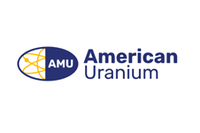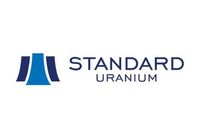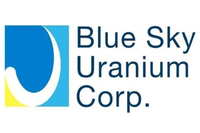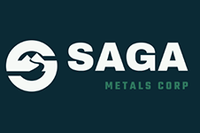Strategic Alliances Offer Lucrative Option for Advancing Uranium Projects

Strategic partnerships in critical materials mining are essential for the clean energy transition. Companies collaborate to secure supply chains and meet rising demand.
To meet the demand for critical materials in the worldwide transition to clean energy, companies increasingly see the value in not going it alone.
Strategic partnerships and collaborations are proving essential as junior exploration and established mining companies alike seek a partner to explore and develop promising projects, take advantage of government support and establish reliable supply chains for clean energy materials.
Working together allows companies to combine capital, land access, expertise and data to speed up the mine development cycle and offer lower risk for investors at every stage.
Demand landscape
There is no energy transition without critical metals. Demand for critical minerals has risen dramatically in recent years. Over the past 20 years, annual trade rose from US$53 billion to US$378 billion, according to the World Trade Organization.
Some of these important minerals, such as uranium, are seeing a sudden turnaround in their markets. “Over the past 10 to 15 years, there has been a significant reduction in global uranium production due to low price and oversupply,” said Chris Frostad, president and CEO of Purepoint Uranium (TSXV:PTU,OTCQB:PTUUF).
As a result, uranium prices dropped, and were at their lowest in 2016 at US$21 per pound.
Now, prices are going up — well over US$80 per pound — and the market is expected to grow 28 percent between 2023 and 2030, according to the World Nuclear Association. Uranium is used almost exclusively for nuclear energy generation and to a lesser degree for medical isotopes and industrial use.
Now, mining companies need to ramp up their supply, but that’s not easily done with uranium. “Unlike most commodities, there are a very limited number of known uranium resources available globally for development at this time,” said Frostad.
Supply chain stress
The challenge with critical materials is the dramatic upsweep in demand as nations move away from fossil fuels. Supply chains for these minerals have been relatively underdeveloped, and now they’re under intense pressure.
Diverse, secure and well-regulated supply chains for these materials, in sound jurisdictions around the world, are important to keep prices stable, protect labour markets and the environment.
Many jurisdictions, such as the US, Australia and the EU, have developed legislation to protect critical materials and foster supply chain development and maintain economic, political and social security, as a result.
But even with larger supports in place, junior exploration companies can struggle to take deposits and move them through the mining cycle and mitigate risk.
Partnering up
Many resource companies working in critical materials have begun forging agreements with others to push projects forward. Those include: offtake agreements, which entail a legal promise to purchase products made in future; joint ventures to work together on a project; earn ins, which allow one party to earn an interest in a property by completing certain milestones; and mergers and acquisitions.
“Exploration partnerships tend to occur between junior exploration companies with a focus on risk mitigation and access to each other’s capital,” said Frostad.
Fortunately, a number of companies are seeking projects and, given their scarcity, are willing to pay for access. “These new entrants need projects, and they are finding them through partnerships with some of the more established players who have assembled larger portfolios.”
Those with development stage projects may be seeking M&A. “Many of these companies are well on their way to putting resources into production themselves, however, given the timelines to production others are looking either for senior partners, to be acquired or have that asset acquired.”
Why work together?
With pressure on to develop deposits of critical materials quickly and affordably, strategic alliances among mining companies have become a way to pool resources and aid in cementing secure and profitable supply chains.
Benefits to partnership include gaining access to capital. Junior exploration and mining companies may work together to share financial resources, which can be in short supply when companies are working at the early development stages. As well, the existence of partnerships around a process can offer lenders and investors a higher sense of security with regards to the project.
Expertise is also crucial. Companies combining technical and leadership expertise may be able to navigate exploration and development more efficiently. With few companies having experience in uranium exploration and mining in particular, having more know-how for the geotechnical stages and navigating the sector can lead to better outcomes.
The relationship may also enable access to larger land packages as well as information, such as historical data, which can speed up advancement.
Importantly, all of these collaborations can help mitigate risk and both enable the project to move forward and increase shareholder trust.
Collaborations in uranium mining are on the rise, as there are limited known deposits. In a growing uranium market, many established companies are seeking to join the action, and are often doing so by teaming up with juniors to gain access to potential deposits. With few companies having expertise in uranium, experience is also in short supply.
Notable deals
This year, Paladin Energy (ASX:PDN,OTCQX:PALAF) and Fission Uranium (TSX:FCU,OTCQX:FCUUF) agreed to combine their assets to create a global uranium leader. The merger would bring together Paladin’s producing Langer Heinrich mine in Namibia with Fission’s advanced Patterson Lake South project in Canada's Athabasca Basin.
The partnership is focused on enhancing the development pipeline, diversifying assets across key uranium jurisdictions and increasing combined exposure to the growing uranium market.
Since 2021, Consolidated Uranium and Energy Fuels (TSX:EFR,NYSEAMERICAN:UUUU) have had a strategic alliance that has seen Consolidated acquire three Energy Fuels mines in Utah and Colorado that had previously been in production. They also have agreements around toll milling, operating and investor rights.
The uranium industry also saw a merger in 2023 between IsoEnergy (TSXV:ISO,OTCQX:ISENF) and Consolidated Uranium, which saw IsoEnergy acquire all the issued and common outstanding shares of Consolidated, making the company one of the largest publicly traded uranium companies. The deal offered Consolidated increased access to capital, among other benefits, with the company saying it was interested in further growth through M&A.
More recently, Purepoint Uranium and IsoEnergy formed a unique exploration partnership by combining 10 of their most promising Athabasca Basin projects into a district-scale 50/50 joint venture, with Purepoint Uranium as the operator. This collaboration allows both companies to invest in the advancement of these projects, with Purepoint Uranium leading exploration and IsoEnergy focusing on developing any identified resources, leveraging each partner’s strengths.
"Over half of our portfolio is now partnered with major uranium players such as Cameco, Orano and IsoEnergy. This not only helps share costs but also highlights the value of these projects, backed by industry leaders," said Frostad.
Partnerships are also happening at a state level. The state-owned China National Uranium has entered into several joint uranium mining ventures in Kazakhstan, the largest producer and exporter of uranium in the world, controlling about 43 percent of global supply. Through these deals, China now controls about 60 percent of future uranium projects in Kazakhstan.
Investor takeaway
Expect more collaborations in the uranium market, as companies look for ways to ramp up resource development, keep up with the climbing demand for the critical mineral and leverage the market’s momentum to generate revenue and increase shareholder value.
This INNSpired article was written as part of an advertising campaign for a company that is no longer a client of INN. This INNSpired article provides information which was sourced by INN, written according to INN's editorial standards, in order to help investors learn more about the company. The company’s campaign fees paid for INN to create and update this INNSpired article. INN does not provide investment advice and the information on this profile should not be considered a recommendation to buy or sell any security. INN does not endorse or recommend the business, products, services or securities of any company profiled. If your company would benefit from being associated with INN's trusted news and education for investors, please contact us.





